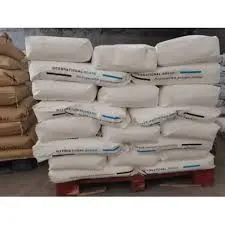
ਦਸੰ. . 16, 2024 10:20 Back to list
Creating High-Performance Materials for Construction Applications Using HPMC
The Role of Construction HPMC in Modern Building Practices
Hydroxypropyl Methylcellulose (HPMC) is an essential additive in the construction industry, playing a pivotal role in enhancing the performance and versatility of various building materials. As a widely used cellulose ether, HPMC is derived from natural cellulose through a chemical modification process. Its unique properties make it an indispensable component in products such as tile adhesives, mortars, plasters, and paints, contributing to improved workability, water retention, and adhesion.
Enhanced Workability
One of the key benefits of incorporating HPMC into construction materials is its ability to enhance workability. When mixed with dry powders, HPMC forms a gel-like consistency that allows for easier application and manipulation of materials. This is particularly important in tile adhesives and cement-based mortars where a smooth consistency is critical for proper installation. The improved workability provided by HPMC helps builders and contractors achieve a uniform application, reducing the likelihood of air pockets and ensuring that materials adhere properly to various substrates.
Water Retention
Another significant advantage of HPMC is its exceptional water retention capabilities. In the construction process, maintaining the right moisture balance is crucial for achieving optimal curing and setting times of cement-based products. HPMC helps retain water within the mixture, preventing premature drying and ensuring that there is enough moisture for the hydration process to occur. This ultimately leads to stronger, more durable structures, enhancing the longevity of the buildings and reducing maintenance costs in the long run.
Improved Adhesion
construction hpmc

Adhesion is a critical aspect of any construction project, and HPMC significantly elevates the bonding properties of construction materials. Whether it’s tile installation or external wall applications, the improved adhesion provides better grip and stability, minimizing the chances of material failure. Enhanced adhesion is particularly important in areas exposed to water or fluctuating temperatures, as it ensures that materials withstand the rigors of environmental changes without delamination or cracking.
Versatility in Application
HPMC's versatility allows it to be used across a wide range of applications in the construction industry. Beyond tile adhesives and mortars, HPMC is also incorporated into gypsum board joint compounds, grouts, and decorative plasters. Its ability to be tailored to meet specific performance criteria makes HPMC a preferred choice for manufacturers looking to innovate and enhance their product offerings.
Environmental Considerations
As the construction industry moves toward more sustainable practices, HPMC presents an environmentally friendly option. Being derived from natural cellulose, HPMC is biodegradable and can be produced using renewable resources. Furthermore, its water retention properties contribute to reduced water consumption during the setting and curing phases of construction, aligning with eco-friendly building practices.
Conclusion
In conclusion, Hydroxypropyl Methylcellulose (HPMC) has become an integral component of modern construction materials. Its unique properties of enhancing workability, improving water retention, and increasing adhesion contribute to the creation of durable, high-quality structures. As the construction industry continues to evolve, the use of HPMC demonstrates a commitment to innovation and sustainability—making it a fundamental ingredient in future building practices. With its wide-ranging applications and benefits, HPMC is poised to play a crucial role in shaping the future of construction.
-
tile-bonding-additives-for-stronger-bonds
NewsAug.22,2025
-
construction-grade-rdp-for-wholesale-needs
NewsAug.22,2025
-
trusted-wholesale-hec-partners
NewsAug.22,2025
-
hec-solutions-for-industrial-excellence
NewsAug.22,2025
-
construction-additives-need-hpmc-essentials
NewsAug.22,2025
-
hpmc-versatile-cellulose-ether-for-industries
NewsAug.22,2025







